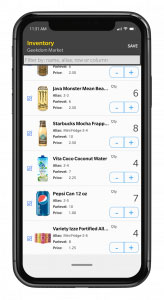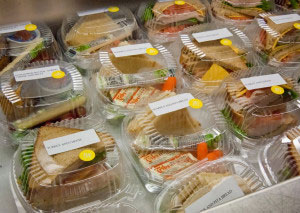News
Micromarkets Add Flexibility Spur Sales In Vending Operation
Do you have bill acceptors on your vending machines? How about cashless devices? Does your company service locations where millennials work? If you answered "yes" to these questions and are part of the convenience services industry, then you must continue to evolve as the needs and wants of our clients emerge. We must be nimble and quick to find the exactly how today's consumers want to buy products at their places of work. We must strive to stay a step ahead and today work on what we may need tomorrow o...
September 30, 2018 | Chris Stave, Parlevel Systems
Do you have bill acceptors on your vending machines? How about cashless devices? Does your company service locations where millennials work? If you answered "yes" to these questions and are part of the convenience services industry, then you must continue to evolve as the needs and wants of our clients emerge. We must be nimble and quick to find the exactly how today's consumers want to buy products at their places of work. We must strive to stay a step ahead and today work on what we may need tomorrow or in a year. Nowhere is this truth more obvious than with micromarkets.
PRODUCT VARIETY IS THE NEW NORM
 |
Now think about the candy and snack segment. Forty-five is around the usual maximum selection. How are you going to squeeze all the products that today's consumers want into 45 selections? You need the good old favorites, but also reduced-fat and/or low-sodium, plus the new "healthier" options. The list of flavor extensions is growing daily (think Wasabi Oreos).
Food is another consideration, as a wide selection is needed for today's consumer. They want access to the nutrition information as well as ingredients before making a purchase. If you want to keep location employees at the workplace, you need an enticing selection. But even beyond the staples, what about some sundries, umbrellas, or even phone chargers?
MORE FLEXIBILITY, GREATER REVENUES
 |
Now, micromarkets are not for every client location, you need 100 + employees for a full-fledged setup and at least 50 for a smartphone-powered solution. Plus, you'll need a location with no public access and a little more wall space than vending. If you currently don't have a fresh food supplier who can provide nice¬looking and great tasting $4.00 + sandwiches and entrees, you should find one. When converting a vending bank with a food machine to a micro market, I have seen food sales jump from 8% – 15% of monthly revenue to around 33% +. Just think of chips, a beverage and maybe a candy bar going with most of the food purchases. You can easily see the potential revenue increase.
With credit/debit card sales and customer accounts creating your market revenue, your products are no longer confined to 5¢ price increments, and you can charge sales tax where applicable. All of a sudden you can mimic c-store pricing! You are bringing convenience stores to the workplace, so you can charge their pricing.
FINDING THE RIGHT PATH
 |
Micromarkets and unattended retail aren't just a fad – they are here to stay. Improved checkout systems and inventory control may be developed the future, but the concept of an open, easy-to-use, well-stocked market with self-checkout will just continue to grow!
Don't let this trend bypass your company. When one of your largest customers calls and says they are leaving you for a company who can provide a micromarket, it may be too late. Talk with kiosk suppliers today, and see how easy the markets are to service right within your vend management system. After all, a lot of the infrastructure you need for markets is already in place. You should be able to route markets right along with your vending, which makes servicing the markets even easier. Sure, prekitting is a prerequisite because of the extensive product selection, but that can be accomplished via your VMS. The barriers to success with micromarkets are nothing that you can't handle.
Markets are an integral part of the convenience services industry and are rapidly taking over many of the best locations. Are micro markets right for you? If you have not explored the options, take a look very soon!
About The Author
 |


